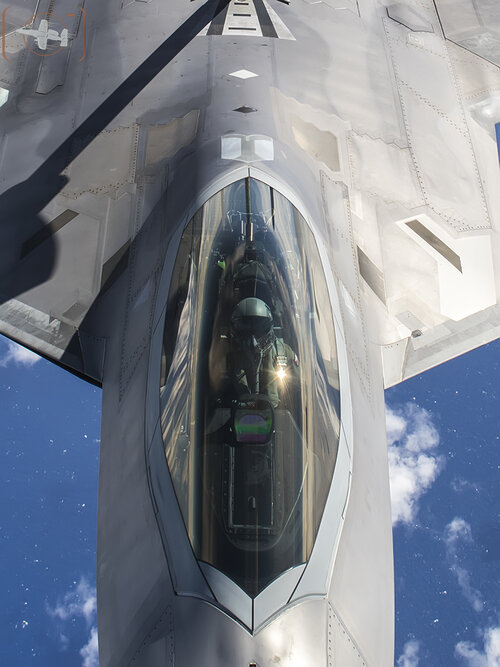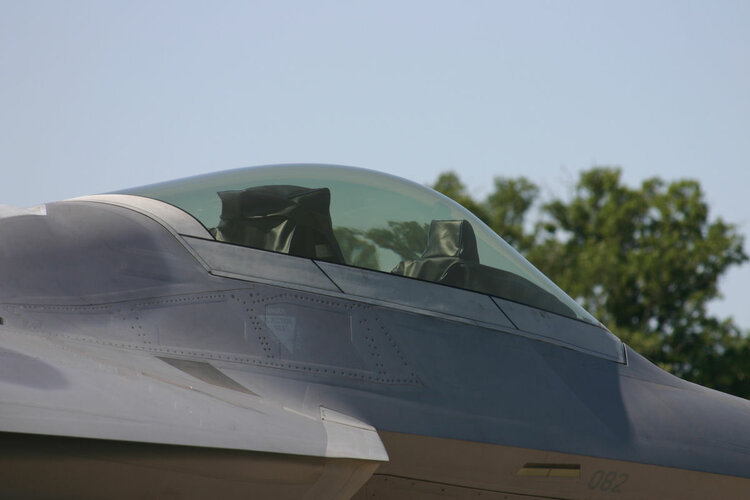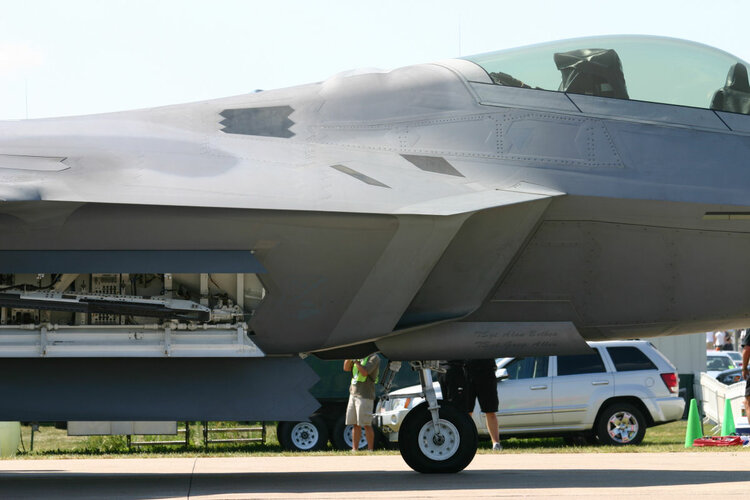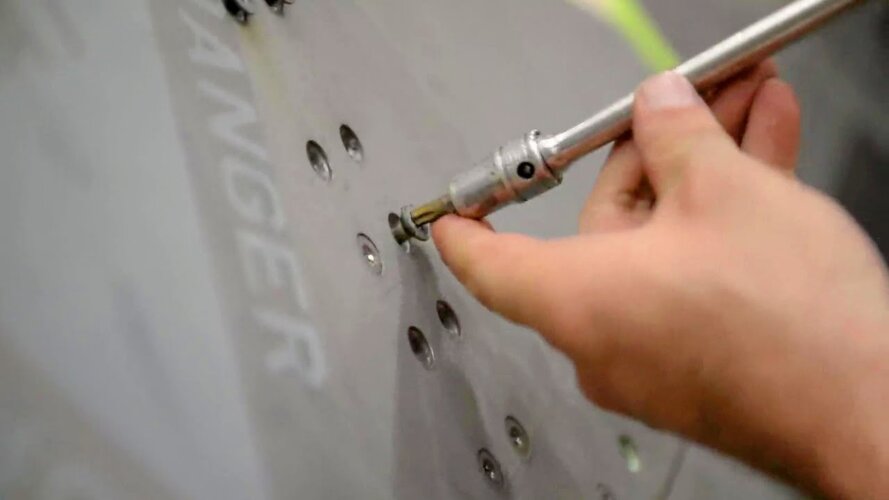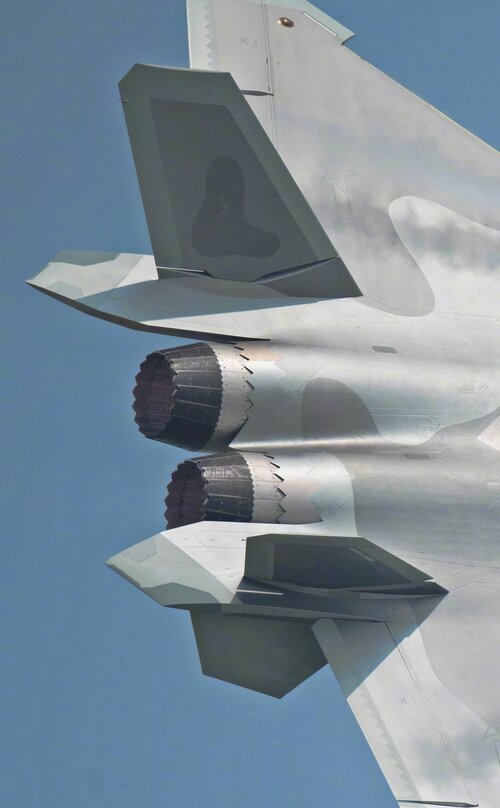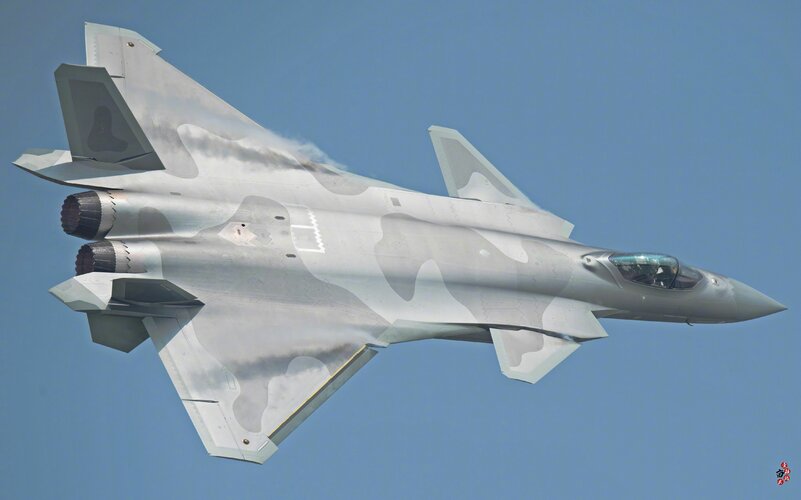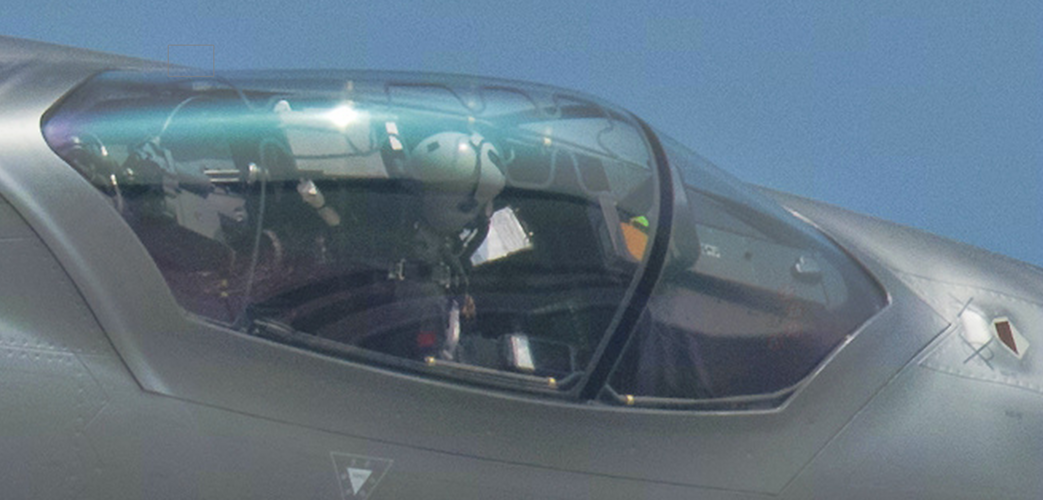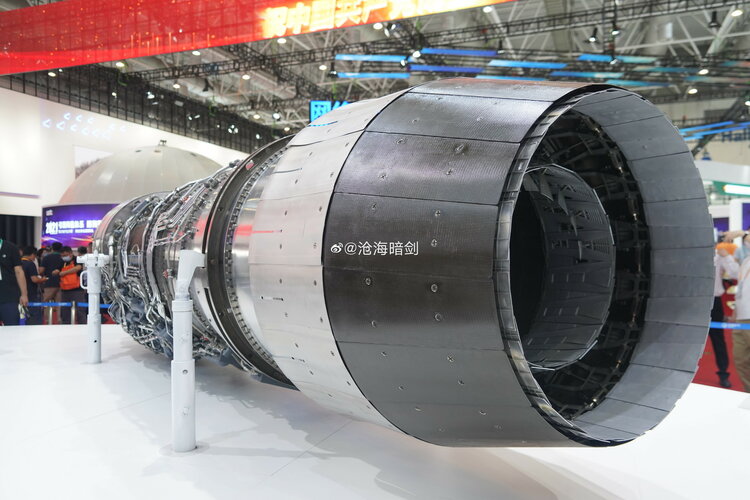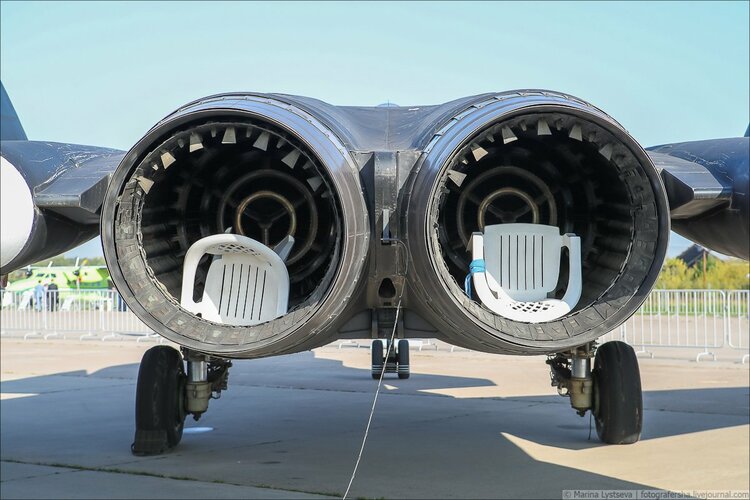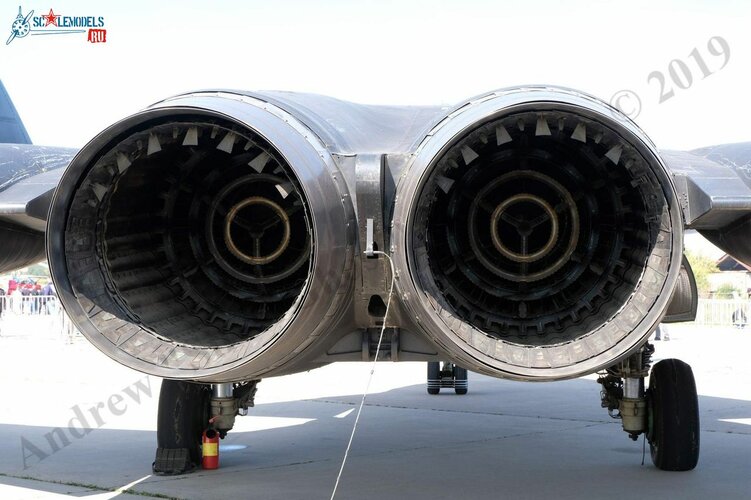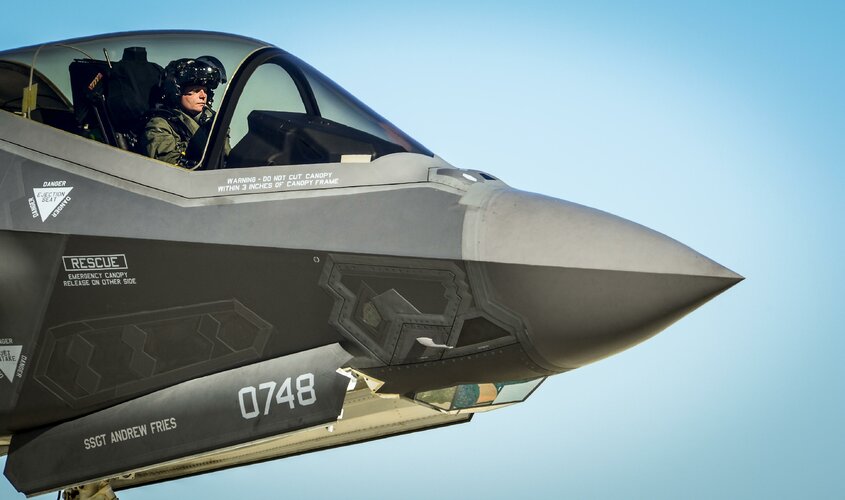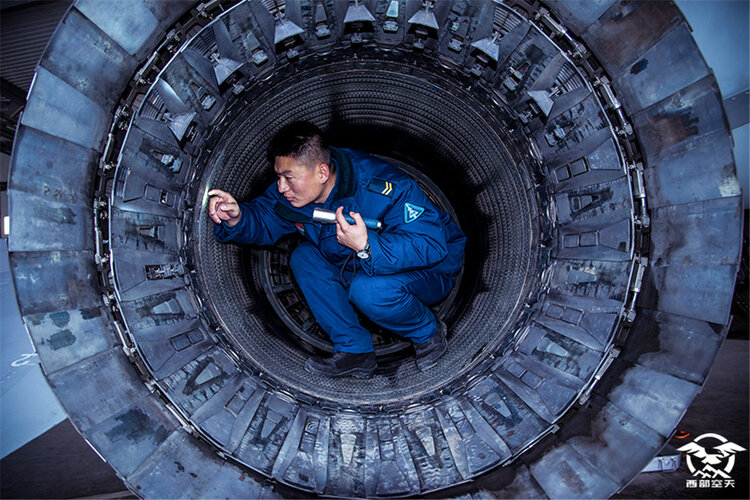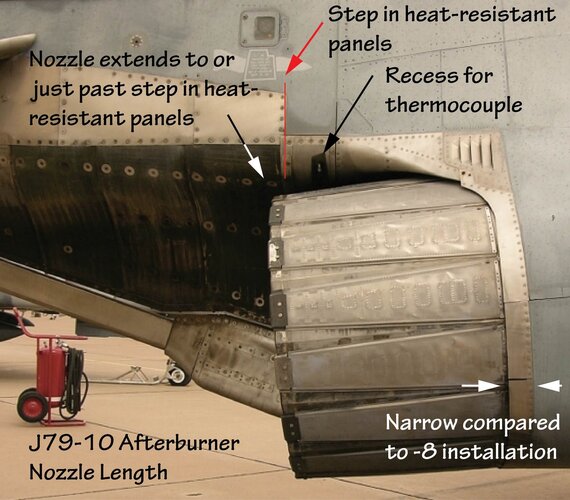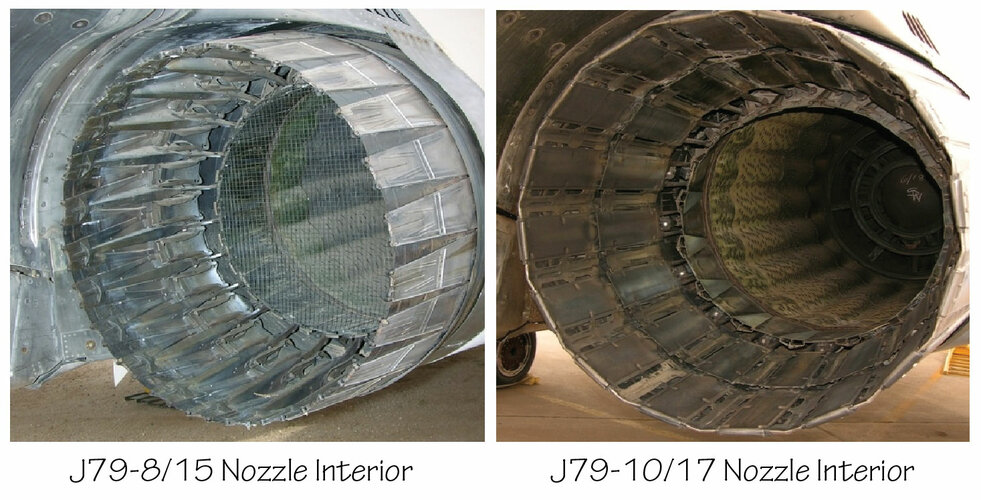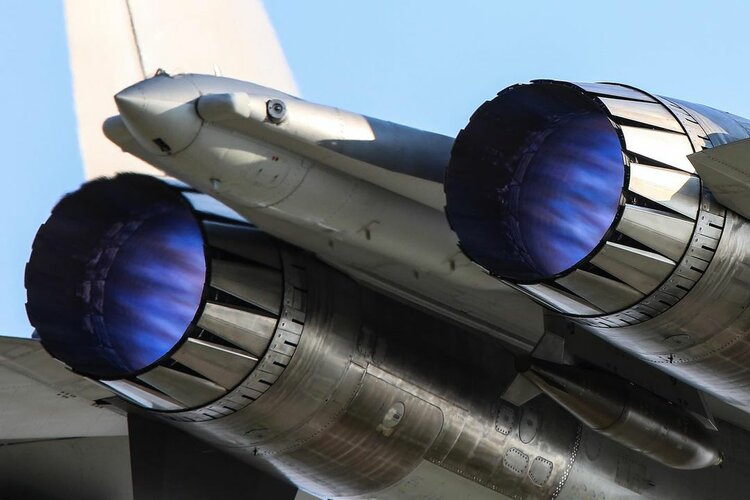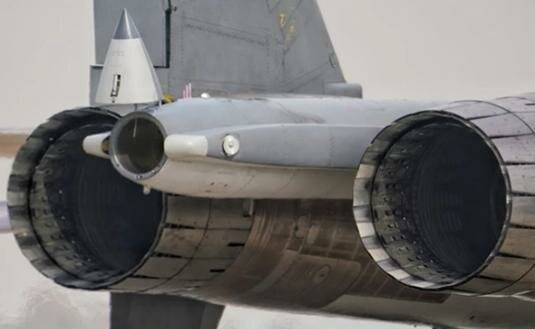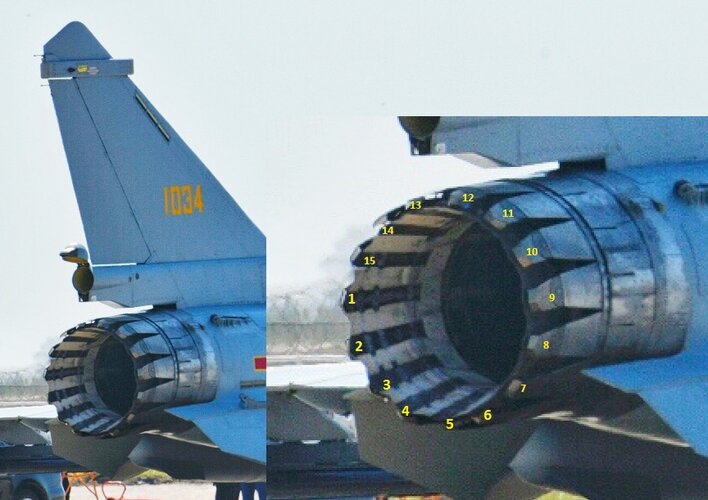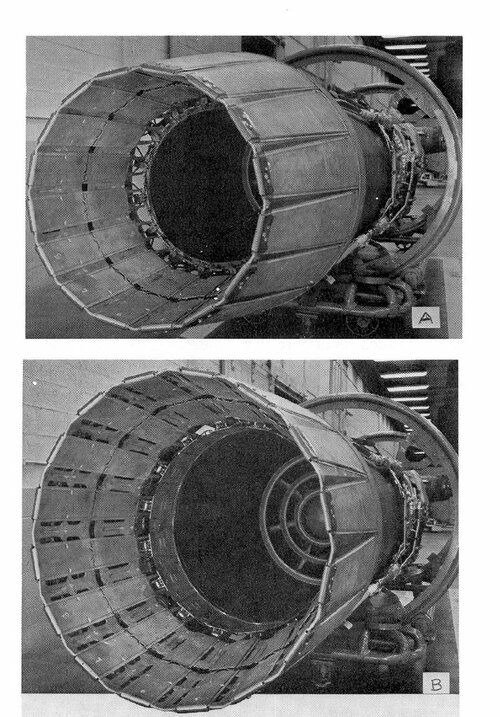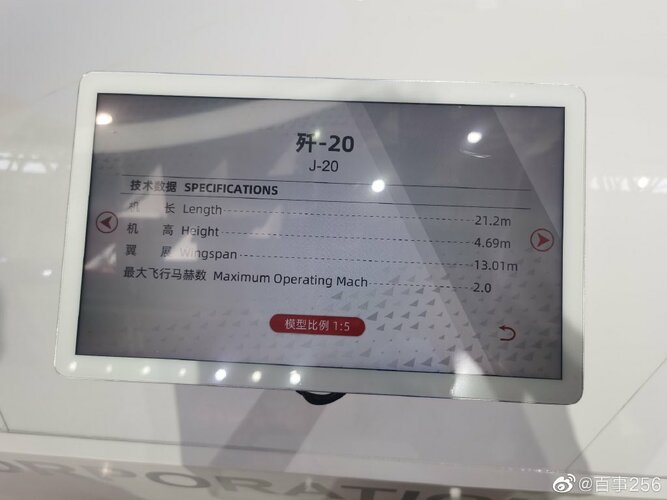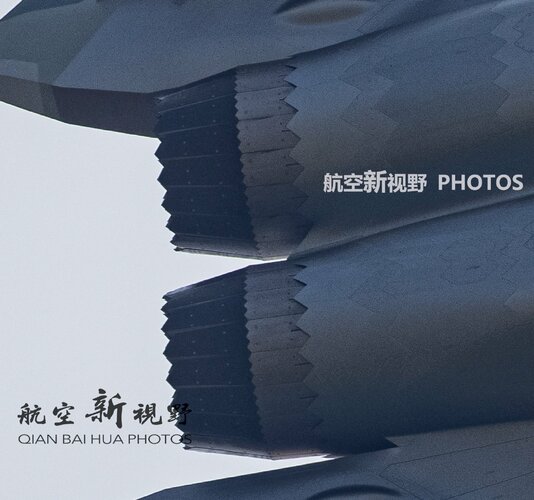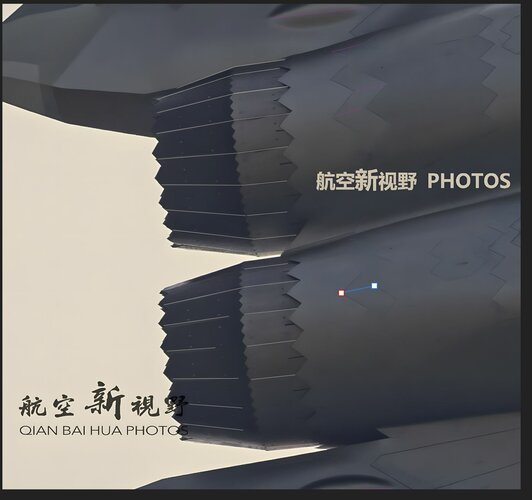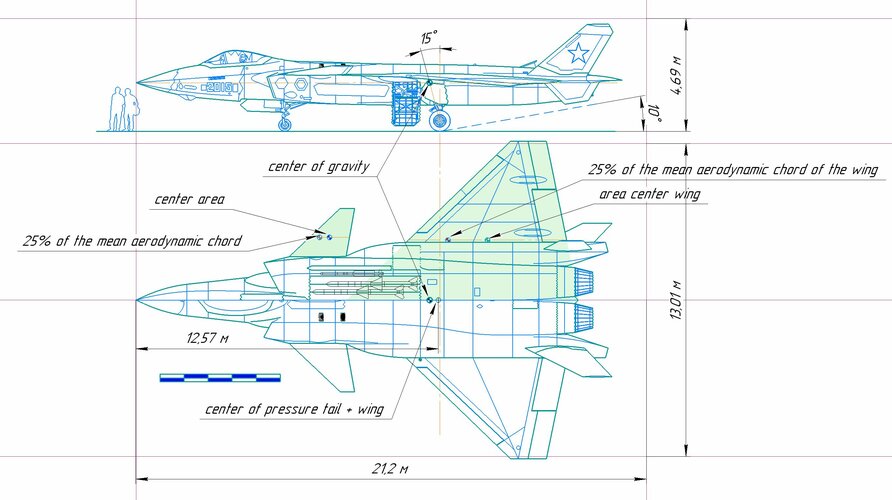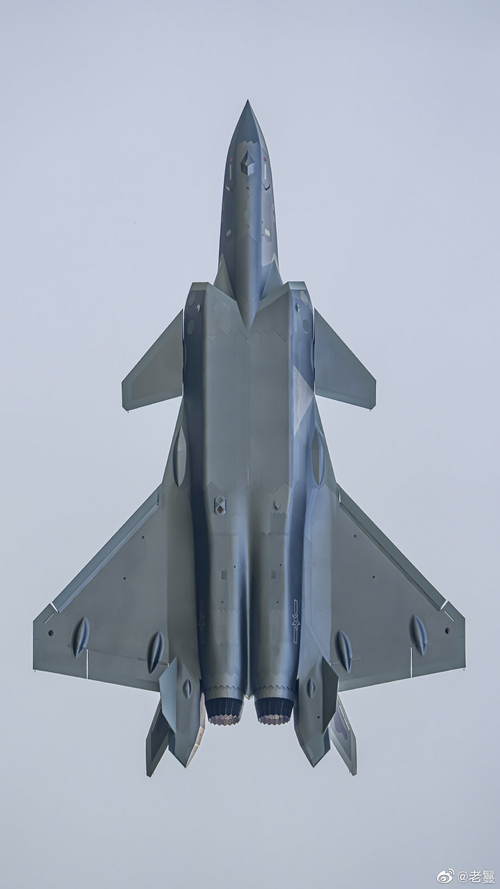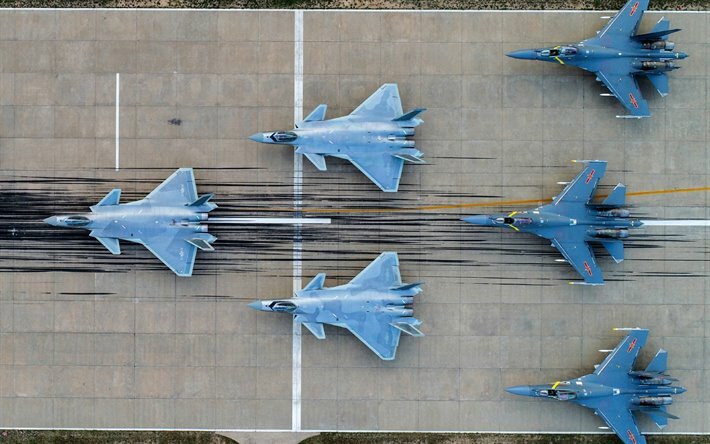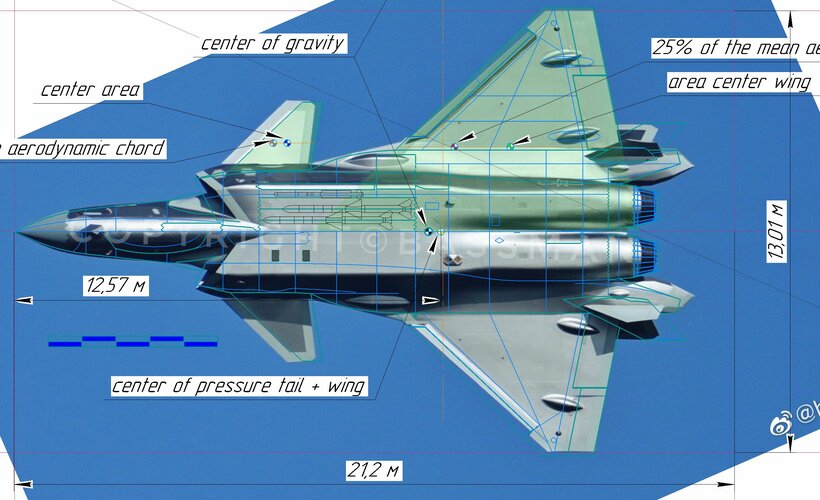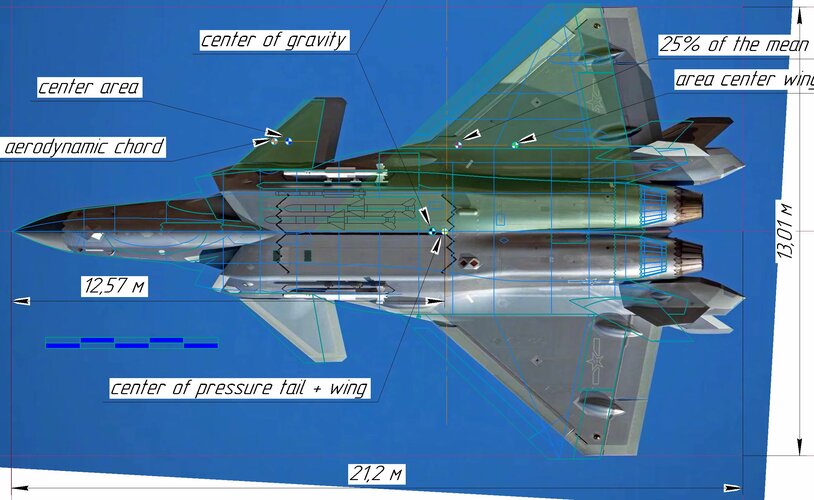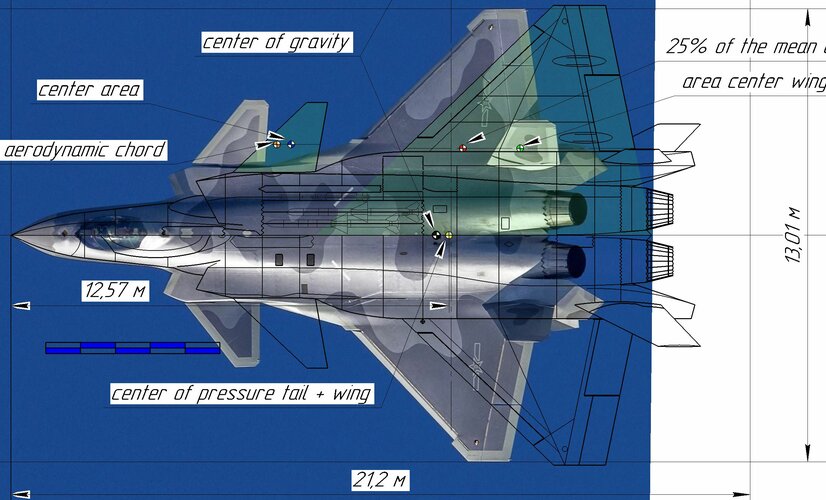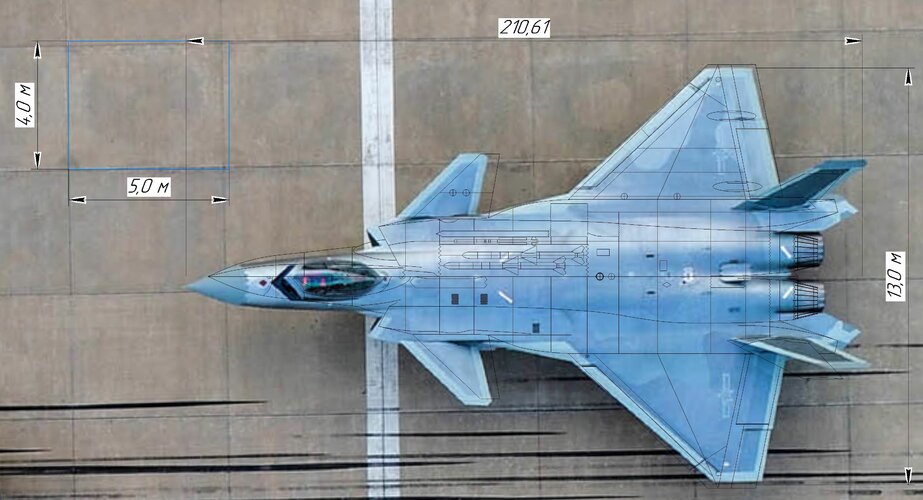The Chinese hacked the F-35's subcontractors. Surely they got a hold of the magical -70 dBsm rivets?If they're below the surface the effect is probably minimal.I find it interesting that rivets are plainly visible around the fuselage/canopy area. That cannot help with its LO RCS.Partial cockpit shot. Looks like all displays are off though.
Another one ...
View attachment 665366
You are using an out of date browser. It may not display this or other websites correctly.
You should upgrade or use an alternative browser.
You should upgrade or use an alternative browser.
Chengdu J-20 news and analysis Part III
- Thread starter overscan (PaulMM)
- Start date
I find it interesting that rivets are plainly visible around the fuselage/canopy area. That cannot help with its LO RCS.
Well, this implies other (more particularly, US) aircraft commonly considered to be stealthy would be substantially different in this regard. I can't say I'm able to discern such a difference, calling into question the assumption on which the hypothesis is premised. This kind of elementary sanity check would save a lot of back and forth.
Attachments
- Joined
- 27 December 2005
- Messages
- 17,748
- Reaction score
- 26,421
I find it interesting that rivets are plainly visible around the fuselage/canopy area. That cannot help with its LO RCS.
Well, this implies other (more particularly, US) aircraft commonly considered to be stealthy would be substantially different in this regard. I can't say I'm able to discern such a difference, calling into question the assumption on which the hypothesis is premised. This kind of elementary sanity check would save a lot of back and forth.
Indeed. For a start, any panel that needs to be opened has to be secured with some kind of fasteners. e.g. F-22.
Attachments
- Joined
- 27 December 2005
- Messages
- 17,748
- Reaction score
- 26,421
- Joined
- 27 December 2005
- Messages
- 17,748
- Reaction score
- 26,421
- Joined
- 3 June 2011
- Messages
- 18,337
- Reaction score
- 12,240
No such thing.The Chinese hacked the F-35's subcontractors. Surely they got a hold of the magical -70 dBsm rivets?If they're below the surface the effect is probably minimal.I find it interesting that rivets are plainly visible around the fuselage/canopy area. That cannot help with its LO RCS.Partial cockpit shot. Looks like all displays are off though.
Another one ...
View attachment 665366
- Joined
- 27 December 2005
- Messages
- 17,748
- Reaction score
- 26,421
- Joined
- 15 January 2021
- Messages
- 400
- Reaction score
- 1,465
Does anyone know the function of the “fingers” hanging down from upper half of the inner primary nozzle? I see them retracted into the segments across the bottom of the nozzle, not sure if they are free floating and are just hanging down by gravity.Closeup WS-10 from Zhuhai 2021
I know that these type of ejector nozzles use the secondary airflow to form an aerodynamic “divergent” area for supersonic expansion, but the outer metal petals are really short. This may imply the engines EPR is not high enough for the specific thrust needed for true supercruise.
- Joined
- 27 December 2005
- Messages
- 17,748
- Reaction score
- 26,421
- Joined
- 15 January 2021
- Messages
- 400
- Reaction score
- 1,465
I really like the white plastic exhaust plugs
These photos seem to confirm that these petals are free floating, hanging down by gravity under static conditions.
Free floating implies to me a system that moves under pressure balance loads. Possibly under certain conditions the cooling air under the AB liner is significantly higher pressure than the central flow, and these mini petals are opening to prevent throttling this airflow into the gas path.
These photos seem to confirm that these petals are free floating, hanging down by gravity under static conditions.
Free floating implies to me a system that moves under pressure balance loads. Possibly under certain conditions the cooling air under the AB liner is significantly higher pressure than the central flow, and these mini petals are opening to prevent throttling this airflow into the gas path.
- Joined
- 27 December 2005
- Messages
- 17,748
- Reaction score
- 26,421
Note that China has been buying lots of D-30KP-2 engines from D-30F6 producer Perm Motors. Is it worth considering if some technical assistance occurred on WS-10 nozzle?
Hardly; as others have mentioned, American stealth fighters in operation can be seen with exposed fastener heads as well. This includes the F-35. I would imagine that in war time, some kind of expedient conductive cover would be placed over them.I find it interesting that rivets are plainly visible around the fuselage/canopy area. That cannot help with its LO RCS.
Attachments
- Joined
- 27 December 2005
- Messages
- 17,748
- Reaction score
- 26,421
Indeed - there are various treatments (pastes, sprays, tapes) to put on any discontinuities when going "stealthed up".
- Joined
- 27 December 2005
- Messages
- 17,748
- Reaction score
- 26,421
This gives a excellent view of WS-10 exhaust and those blow in panels.
It seems clear to me the original shot on the J-20 has the inner petals in a non-divergent position. There seem to be darker patches on them corresponding to the blow in panels.
It seems clear to me the original shot on the J-20 has the inner petals in a non-divergent position. There seem to be darker patches on them corresponding to the blow in panels.
Attachments
Last edited:
- Joined
- 27 December 2005
- Messages
- 17,748
- Reaction score
- 26,421
Its technically an ejector nozzle as used on J-79 or the Concorde's Olympus, right? Outer flap design is quite similar to J-79. That was as good as it got prior to development of the iris nozzle.
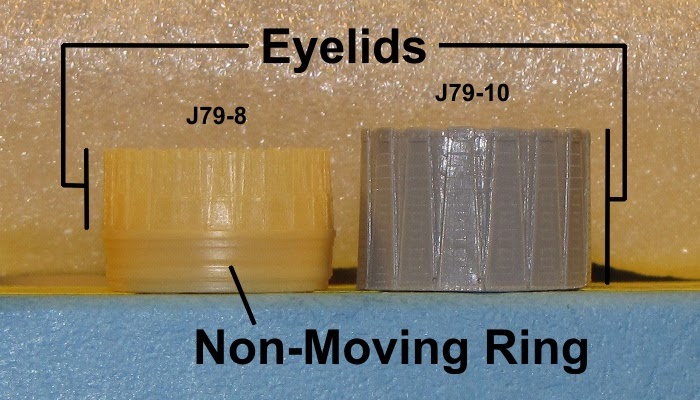
 tailspintopics.blogspot.com
tailspintopics.blogspot.com
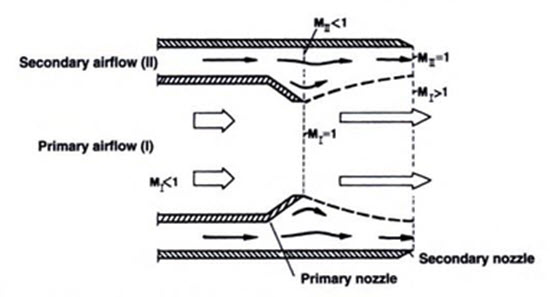
 aerospacenotes.com
aerospacenotes.com
Bearing in mind vintage WS-10 was originally derived from the GE CFM56 core, with no afterburner, it makes sense that they had no model for an iris nozzle prior to getting hold of AL-31F, while they possibly had a J-79 from Vietnam - and didn't they start copying a Soviet R-29-300 engine from Egypt?
The latest WS-10 on J-16 has apparently different nozzles, while the J-10B TVC demonstrator is different again.

J79 Exhaust Nozzles
There are two different J79 afterburner nozzles, "short" and "long." The -8 engine in the F-4B/N, almost all of the Blue Angels F-4Js, A3J-1...

Ejector Nozzle - Propulsion 1 - Aerospace Notes
What Is Ejector Nozzle? | Variable Geometry Fixed Ejector Nozzle | Variable Flap Ejector Nozzle | Blow-In Door Ejector Nozzle
Bearing in mind vintage WS-10 was originally derived from the GE CFM56 core, with no afterburner, it makes sense that they had no model for an iris nozzle prior to getting hold of AL-31F, while they possibly had a J-79 from Vietnam - and didn't they start copying a Soviet R-29-300 engine from Egypt?
The latest WS-10 on J-16 has apparently different nozzles, while the J-10B TVC demonstrator is different again.
Attachments
Last edited:
- Joined
- 27 December 2005
- Messages
- 17,748
- Reaction score
- 26,421
SAE 680295 Variable-Geometry Exhaust Nozzles and Their Effects on Airplane Performance by R. C. Ammer and W. F. Punch AEG Engineering, General Electric Co
 doi.org
doi.org
This is a late-model J-79 variable flap ejector nozzle from an informative article on J-79 nozzle design evolution.
680295: Variable-Geometry Exhaust Nozzles and Their Effects on Airplane Performance - Technical Paper
<div class="htmlview paragraph">The development of exhaust nozzles and their application in operational military aircraft are discussed. Prime consideration is given to installation factors such as engine bay and nozzle cooling, inlet-engine flow matching, and aerodynamic effects on external...
This is a late-model J-79 variable flap ejector nozzle from an informative article on J-79 nozzle design evolution.
Attachments
Off SDF:
so, looks like it's 21.2x13.01? @paralay And I'm off by 32 cm on length and 6 cm on wingspan. 76-77 meters wing area?
Also:
Why does this look like TVC deflection? Perhaps they implemented an ultra-lightweight TVC with limited deflection angles?
so, looks like it's 21.2x13.01? @paralay And I'm off by 32 cm on length and 6 cm on wingspan. 76-77 meters wing area?
Also:
Why does this look like TVC deflection? Perhaps they implemented an ultra-lightweight TVC with limited deflection angles?
Attachments
- Joined
- 27 December 2005
- Messages
- 17,748
- Reaction score
- 26,421
Finally, some basic specs for J-20.
Length: 21.2m
Span: 13.01m
Height: 4.69m
Max Speed: Mach 2.0
I don't see any TVC in the picture personally?
Length: 21.2m
Span: 13.01m
Height: 4.69m
Max Speed: Mach 2.0
I don't see any TVC in the picture personally?
Yeah so the lines about the J-20's DSI screwing it for high-speed are probably right; the Chinese kept on screwing with the DSI to provide high-speed, and their earlier experience with the J-10's DSI and the JF-17's DSI probably helped, but they're still limited to (an unclassified?) Mach 2, so it seems.Finally, some basic specs for J-20.
Length: 21.2m
Span: 13.01m
Height: 4.69m
Max Speed: Mach 2.0
I don't see any TVC in the picture personally?
As for TVC, look at the nozzles closely. They're not parallel. It's completely weird.
===
I'm also not sure about the provenance of the specs; the title on the bottom is 模型比例, which lists 5:1. 模型比例 -> scale model, although that's implying 4.24 meters length for the scale model, which I don't think would be attractive to hobbyists.
===
Another "are you sure it's not TVC" picture from by78 on SDF:
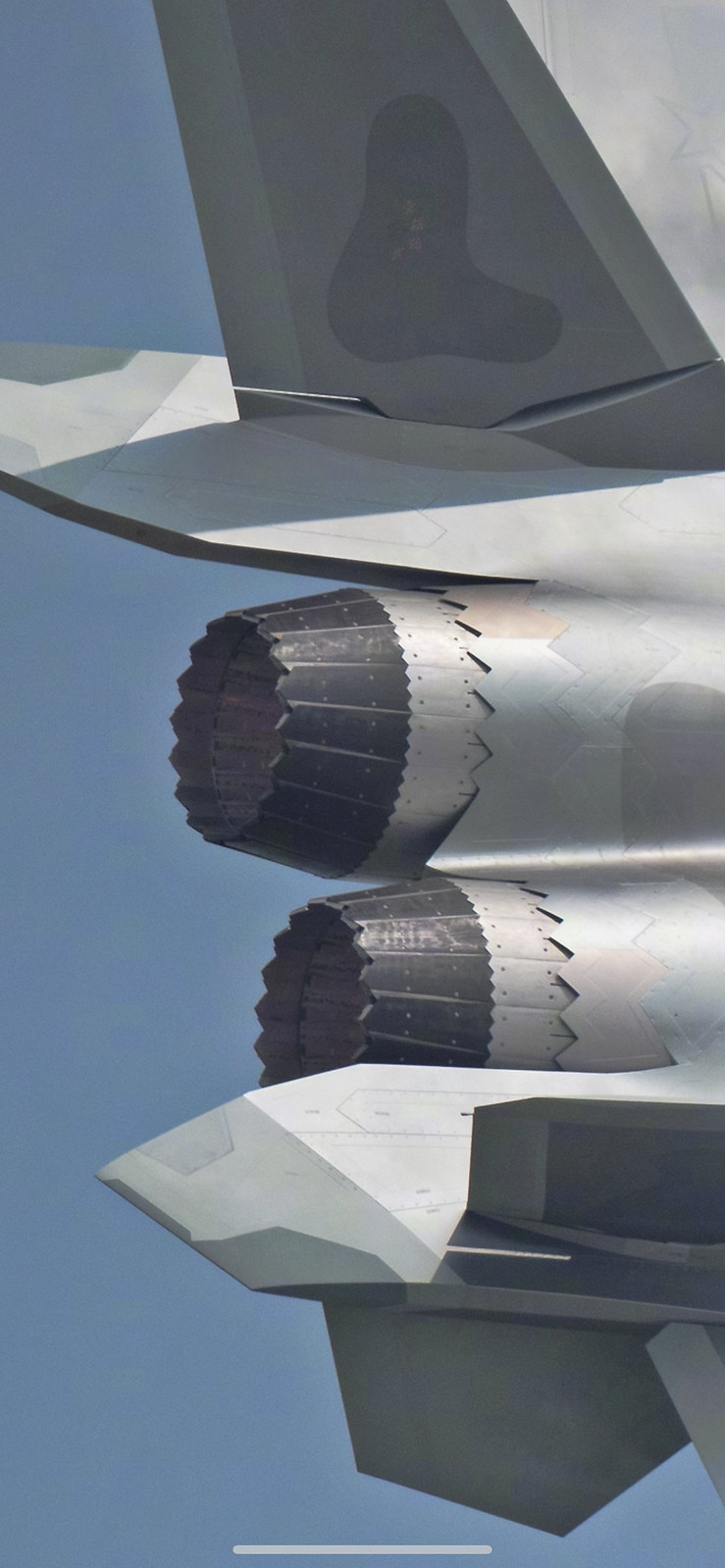
Last edited:
- Joined
- 27 December 2005
- Messages
- 17,748
- Reaction score
- 26,421
The info panel was below the 1:5 J-20 scale model in the big hall. What's odd about this?Yeah so the lines about the J-20's DSI screwing it for high-speed are probably right; the Chinese kept on screwing with the DSI to provide high-speed, and their earlier experience with the J-10's DSI and the JF-17's DSI probably helped, but they're still limited to (an unclassified?) Mach 2, so it seems.Finally, some basic specs for J-20.
Length: 21.2m
Span: 13.01m
Height: 4.69m
Max Speed: Mach 2.0
I don't see any TVC in the picture personally?
As for TVC, look at the nozzles closely. They're not parallel. It's completely weird.
===
I'm also not sure about the provenance of the specs; the title on the bottom is 模型比例, which lists 5:1. 模型比例 -> scale model, although that's implying 4.24 meters length for the scale model, which I don't think would be attractive to hobbyists.
Also don't see an issue with Mach 2.0.
I'll take a look at the nozzle angles but bear in mind engines are often mounted with offset thrust lines. Su-27 from memory has them slightly toed out?
Last edited:
- Joined
- 3 June 2011
- Messages
- 18,337
- Reaction score
- 12,240
So almost 70 feet. Hopefully it finally puts to rest the notion that the J-20 isn't much larger than the F-22.Finally, some basic specs for J-20.
Length: 21.2m
Span: 13.01m
Height: 4.69m
Max Speed: Mach 2.0
I don't see any TVC in the picture personally?
Last edited:
I just didn't get provenance, but Henri Kahnemann reported it on the 28th:The info panel was below the 1:5 J-20 scale model in the big hall. What's odd about this?Yeah so the lines about the J-20's DSI screwing it for high-speed are probably right; the Chinese kept on screwing with the DSI to provide high-speed, and their earlier experience with the J-10's DSI and the JF-17's DSI probably helped, but they're still limited to (an unclassified?) Mach 2, so it seems.Finally, some basic specs for J-20.
Length: 21.2m
Span: 13.01m
Height: 4.69m
Max Speed: Mach 2.0
I don't see any TVC in the picture personally?
As for TVC, look at the nozzles closely. They're not parallel. It's completely weird.
===
I'm also not sure about the provenance of the specs; the title on the bottom is 模型比例, which lists 5:1. 模型比例 -> scale model, although that's implying 4.24 meters length for the scale model, which I don't think would be attractive to hobbyists.
Also don't see an issue with Mach 2.0.
View: https://twitter.com/HenriKenhmann/status/1442806431934140419
So it should be authentic.
As others have mentioned, it's a shame we still don't have empty weight or fuel capacity.
Mach 2.0 is bad for the same reason the F-35 being limited to Mach 1.6 is bad; if you have to run, you have to run, and being too slow to run away means you lose the airframe.
===
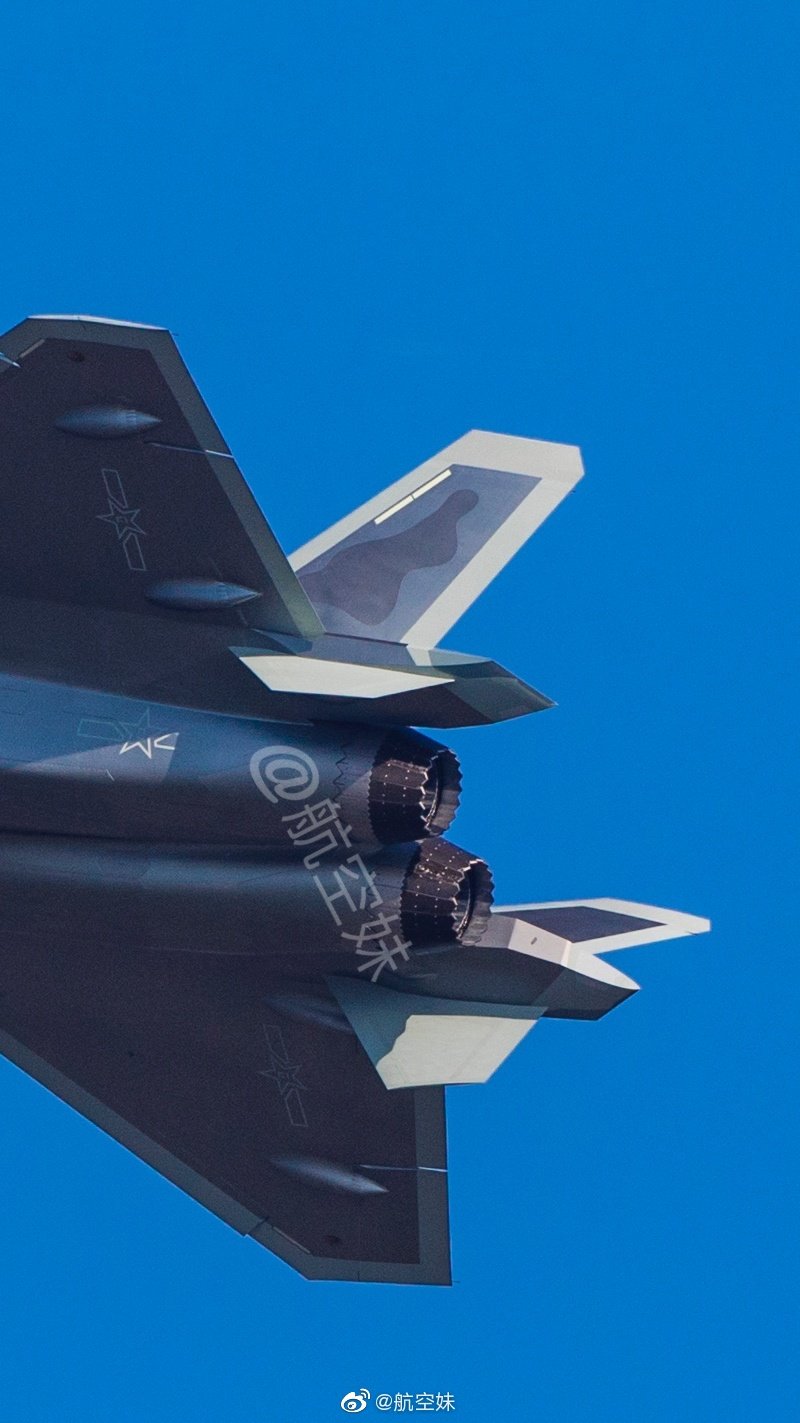
From OedoSoldier's Twitter.
Seriously, why does the J-20 with WS-10 keep on looking like it has TVC?
Last edited:
- Joined
- 27 December 2005
- Messages
- 17,748
- Reaction score
- 26,421
And span is 1m less. Nobody ever said it wasn't longer. Its about 11.5% longer and 7% less span.So almost 70 feet. Hopefully it finally puts to rest the notion that the J-20 isn't much larger than the F-22.Finally, some basic specs for J-20.
Length: 21.2m
Span: 13.01m
Height: 4.69m
Max Speed: Mach 2.0
I don't see any TVC in the picture personally?
- Joined
- 27 December 2005
- Messages
- 17,748
- Reaction score
- 26,421
You have to be careful as engine thrust line usually has an offset angle. So the thrust line may be several degrees down and also toed out from the centreline. Establishing the angle of the fuselage is complicated by local curvature, camera angle etc.
There may be something there but you need more rigorous analysis.
There may be something there but you need more rigorous analysis.
Last edited:
So almost 70 feet. Hopefully it finally puts to rest the notion that the J-20 isn't much larger than the F-22.Finally, some basic specs for J-20.
Length: 21.2m
Span: 13.01m
Height: 4.69m
Max Speed: Mach 2.0
I don't see any TVC in the picture personally?
J-20's length has already largely been established in the past.
The below estimate I believe was done by Deino a few years ago.
Getting within 33cm of the aircraft's true length is pretty damned accurate I'd say.
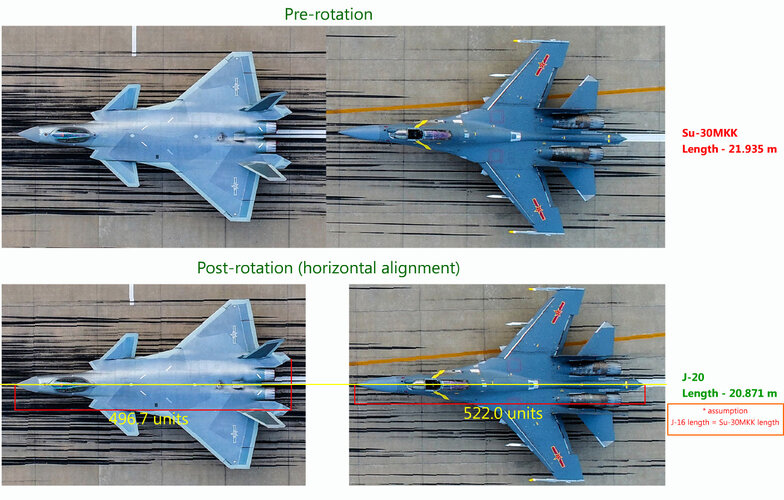
You have to be careful as engine thrust line usually has an offset angle. So the thrust line may be several degrees down and also toed out from the centreline. Establishing the angle of the fuselage is complicated by local curvature, camera angle etc.
There may be something there but you need more rigorous analysis.
This is interesting.View attachment 665510
That seems like a pretty high res photo that it was taken from. What's the full photo angle?
- Joined
- 27 December 2005
- Messages
- 17,748
- Reaction score
- 26,421
- Joined
- 27 December 2005
- Messages
- 17,748
- Reaction score
- 26,421
Deleted posts about skin cracks which were actually artifacts from an image resize.
- Joined
- 27 December 2005
- Messages
- 17,748
- Reaction score
- 26,421
Mach 2.0 is bad for the same reason the F-35 being limited to Mach 1.6 is bad; if you have to run, you have to run, and being too slow to run away means you lose the airframe.
I don't agree at all. How many hours have any modern fighters outside the MiG-25/31 spent above Mach 2? Practically none.
The length of the aircraft causes distrustso, looks like it's 21.2x13.01? @paralay And I'm off by 32 cm on length and 6 cm on wingspan. 76-77 meters wing area?
the wing area is 73 m2 the area of the front horizontal tail is 2 x 3 m2
total area 73 m2 + 6 m2 = 79 m2
Attachments
It's probably sluggish. I have no doubts that China would otherwise have demonstrated it doing aggressive aerobatics like they marvelously did with that J-10.
However the minimal wing, forward large canard and elongated fuselage with internal weapons bays could make it a proper ride when it comes to acceleration once a proper engine is ultimately fitted as compared to other similar designs.
However the minimal wing, forward large canard and elongated fuselage with internal weapons bays could make it a proper ride when it comes to acceleration once a proper engine is ultimately fitted as compared to other similar designs.
- Joined
- 27 December 2005
- Messages
- 17,748
- Reaction score
- 26,421
Your drawing proportions aren't correct, its longer than you show, but dimensions still seem a bit off. Will try to quantify.The length of the aircraft causes distrustso, looks like it's 21.2x13.01? @paralay And I'm off by 32 cm on length and 6 cm on wingspan. 76-77 meters wing area?
the wing area is 73 m2 the area of the front horizontal tail is 2 x 3 m2
total area 73 m2 + 6 m2 = 79 m2
- Joined
- 27 December 2005
- Messages
- 17,748
- Reaction score
- 26,421
Span is unambiguous. Therefore assuming span is definitely 13.01m, does 21.2m length make sense?
Ratio Length/width = 1.6295
Using the overhead satellite view I get closest to the right aspect ratio (1.627) if the length is measured to the end of the tail boom rather than the tip of the tail.
I get 21.37m for length to tip of vertical tail, scaled from 13.01m for wingspan.
However its very low res. Anyone got a good top or bottom view?
The high res pic is good but seems to be foreshortened.
Ratio Length/width = 1.6295
Using the overhead satellite view I get closest to the right aspect ratio (1.627) if the length is measured to the end of the tail boom rather than the tip of the tail.
I get 21.37m for length to tip of vertical tail, scaled from 13.01m for wingspan.
However its very low res. Anyone got a good top or bottom view?
The high res pic is good but seems to be foreshortened.
Attachments
Last edited:
BLACK_MAMBA
ACCESS: Secret
- Joined
- 17 July 2019
- Messages
- 382
- Reaction score
- 879
Who says they want to demonstrate the full capabilities of the aircraft? When the Gripen entered service in SA those first few public displays where also rather mundane... While I also doubt the J-20 has the thrust it needs/will have once WS-15 comes online, I wouldn't conclude much about it's maneuvering capabilities based off it's Zhuhai performance. What we saw there could have been flown by a Mirage F1 and I guarantee the J-20 has a better T-W ratio and better turning capabilities with FBW than a Mirage... The Chinese are holding back - by how much we will have to wait and see.It's probably sluggish. I have no doubts that China would otherwise have demonstrated it doing aggressive aerobatics like they marvelously did with that J-10.
However the minimal wing, forward large canard and elongated fuselage with internal weapons bays could make it a proper ride when it comes to acceleration once a proper engine is ultimately fitted as compared to other similar designs.
It's probably sluggish. I have no doubts that China would otherwise have demonstrated it doing aggressive aerobatics like they marvelously did with that J-10.
However the minimal wing, forward large canard and elongated fuselage with internal weapons bays could make it a proper ride when it comes to acceleration once a proper engine is ultimately fitted as compared to other similar designs.
Uhh prior to Zhuhai 2018 that displayed the J-10B demonstrator with TVC, all J-10 aerial displays were very conservative as well.
The J-10B demonstration with TVC was very much the exception, and remains the only domestic fighter airframe that we know of currently flying with TVC.
If you have to compare J-20's flight demonstration with J-10s, it should be most accurately compared to all of the various J-10 aerial displays we've seen that were not the TVC equipped J-10B demonstrator.
Free floating implies to me a system that moves under pressure balance loads. Possibly under certain conditions the cooling air under the AB liner is significantly higher pressure than the central flow, and these mini petals are opening to prevent throttling this airflow into the gas path.
If the inner nozzle really opens to lie completely flush with the outer contour (the J79 seems to leave a sizable circumferential gap, and even the NK-25 should allow some leakage), your assessment could be correct.
Similar threads
-
Shenyang FC-31 demonstrators / J-35 naval fighter / J-35A land-based version
- Started by Foxglove
- Replies: 1K
-
-
-
-

